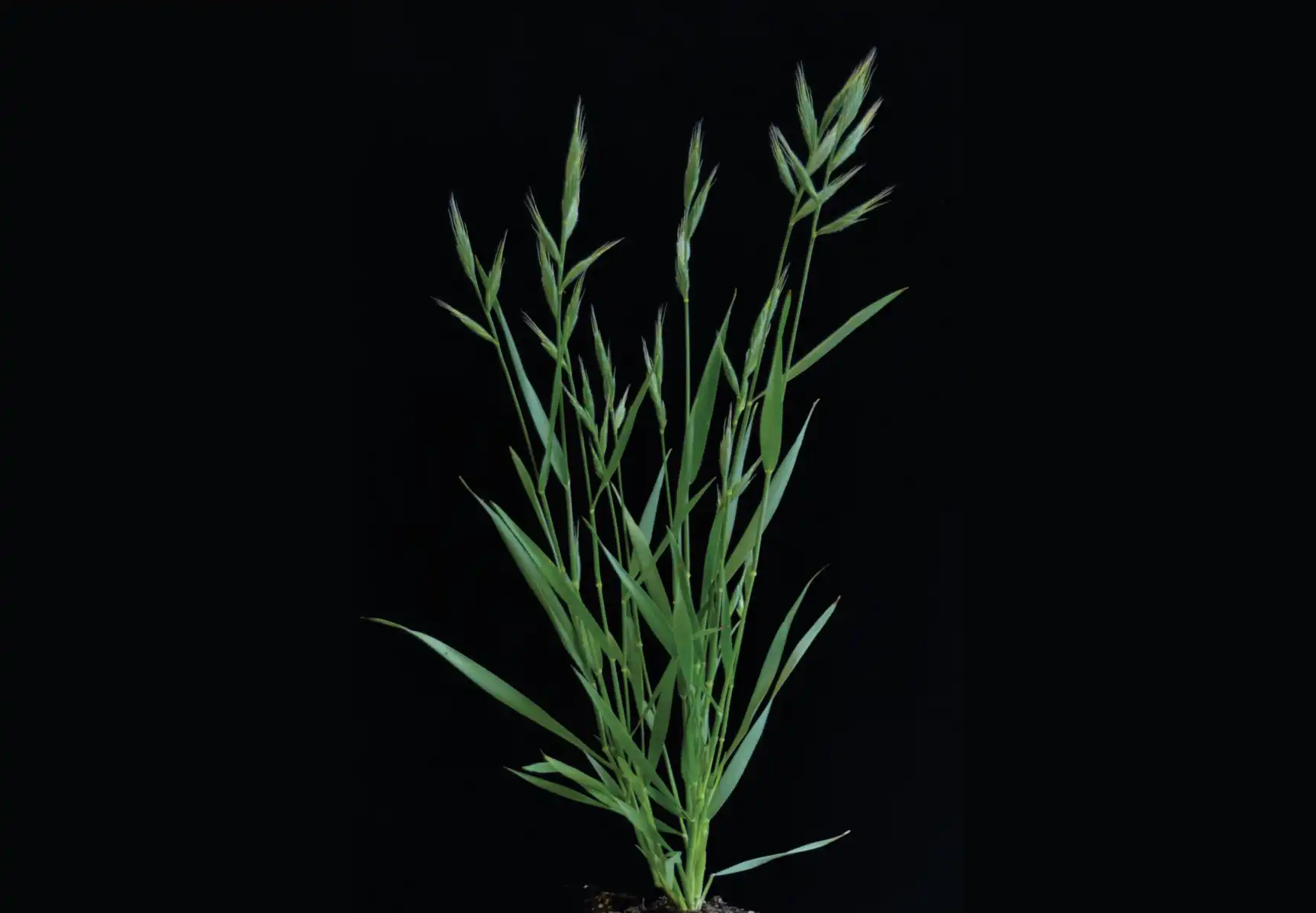A research group at the University of Bern is studying how plants “breathe”. They have gained new insights into how grasses develop efficient “breathing pores” on their leaves. If important landmark components in this development process are missing, the gas exchange between plant and atmosphere is impaired. The findings are also important regarding climate change.
Grasses have “respiratory pores” (called stomata) that open and close to regulate the uptake of carbon dioxide for photosynthesis on the one hand and water loss through transpiration on the other. Unlike many other plants, stomata in grasses form lateral “helper cells”. Thanks to these cells, the stomata of grasses can open and close more quickly, which optimizes plant-atmosphere gas exchange and thus saves water.
For the current study, Prof. Dr. Michael Raissig, Dr. Heike Lindner and co-author Roxane Spiegelhalder from the Institute of Plant Sciences (IPS) at the University of Bern investigated the development of helper cells in the grass Brachypodium distachyon. They discovered two proteins that accumulate on opposite sides of a cell, acting like a “compass” to ensure the correct development of helper cells in grasses. The research results were published in the journal eLife.
A cell compass for the development of helper cells
Helper cells are formed by unequal, asymmetric cell division. In this process, a cell divides into a small cell, the helper cell, and a larger neighboring cell. For this division to occur in the correct ratio and orientation, the cell needs landmarks. These landmarks act as points of orientation and are given by so-called polarity proteins, which accumulate on opposite sides of the cell and can thus define, for example, left and right or top and bottom. In this study, the Bern researchers discovered two polarity proteins that accumulate on two opposite sides. “In a sense, the two proteins act as a cellular compass and control the orientation of cell division and the development of helper cells. We found that helper cells do not form properly when one of these proteins is missing. This negatively influences the efficient and water-saving gas exchange of the grass,” explains project leader Michael Raissig.
Plant respiratory pores and climate change
“I am always fascinated that the lack of a cell compass in a single cell type can affect the gas exchange dynamics and efficiency of the entire plant,” says Michael Raissig. He says this is particularly relevant in light of climate change, which causes longer drought period and excessive heat. Grasses play a central role in human food security; cereals such as corn, rice and wheat are all grasses and together provide more than half of the calories consumed by humans. “Therefore, it is of utmost importance to understand how plants “breathe” and how and why grasses form more efficient “breathing” pores,” adds Raissig.
While this study focuses mainly on developmental biology, these findings could nonetheless be relevant to improving agricultural crops. “Stomata are the cellular gatekeepers between the leaf and the environment and are the first to respond to changes in climate,” says PhD student and co-author Roxane Spiegelhalder. Therefore, she says, it is imperative to understand how and why grasses form the most efficient “gatekeepers” in order to “breathe” in a more water-efficient manner. How and whether these findings can be transferred to other crops, however, requires further research, Spiegelhalder concludes.
Read the paper: eLife
Article source: Universität Bern
Image: The wild model grass Brachypodium distachyon. Credit: Courtesy of Michael T. Raissig






